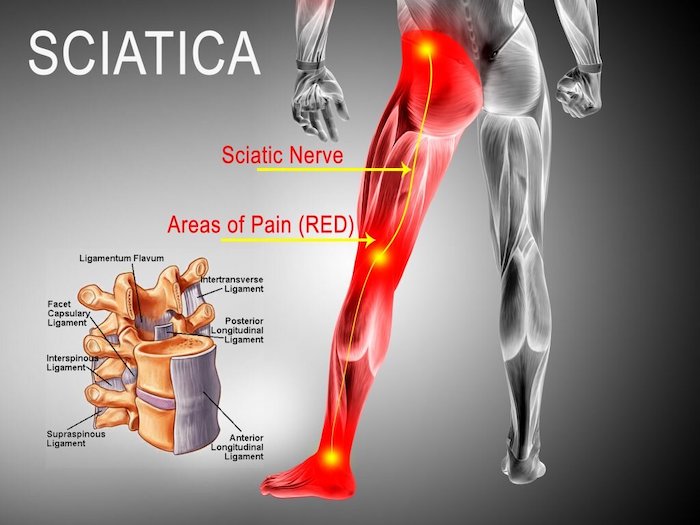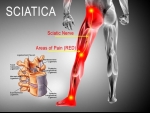
The burning pain and heaviness that you feel in your leg from sciatica can be debilitating. While sciatica symptoms typically resolve without the need for intense medical treatment, it may take over a month for the pain to subside, limiting your ability to perform daily activities.
Several self-care methods can be tried at home to relieve sciatica. While some treatments help provide temporary relief irrespective of your medical diagnosis, others target the underlying cause directly relieving the symptoms and preventing future recurrences. This blog provides insights on several such at-home remedies for sciatica pain.
Home Treatments for Immediate Sciatica Relief
It’s a good idea to treat your sciatica as soon as it flares up. For immediate relief, try one or more of the following tips.
Ice Your Rear Pelvis
Ice therapy can help immediately cool down your acute, burning sciatica pain. When you apply ice therapy to your rear pelvis (the region of your sciatic nerve roots), the cooling temperature helps constrict your blood vessels and reduce blood flow creating a numbing effect and instantly reducing pain. Ice therapy also helps cool down your muscle fibers, reducing muscle spasms.
It’s easy to use ice therapy at home grab a bag of frozen vegetables from your freezer or simply wrap a few ice cubes in a thick towel. Be sure to use ice therapy intermittently for about 15 minutes at a time with a 2-hour break in between consecutive applications. Place a towel or cloth barrier between your skin surface and the ice pack to prevent direct skin injury.
Apply Topical Pain Medication
Ointments, creams, or gels containing methyl salicylate, menthol, trolamine salicylate, capsaicin, camphor, and/or cannabidiol (CBD) can help provide immediate relief due to their localized action. The medications act by altering the blood flow to the sore region to create a numbing effect and help decrease inflammation.
Topical medications are easily available over-the-counter and do not need a doctor’s prescription for purchase. Apply the recommended amount on your rear pelvis and gently massage the area. Avoid using ice or heat therapy when you use topical medications, as the effectiveness of both treatments will be reduced.
Massage With a Tennis Ball
A firm, rounded object, such as a tennis ball, can help provide effective pain relief from sciatica if used correctly. Tennis balls act as foam rollers and can help loosen soft tissues, release tension in muscles, relieve entrapped nerves, and improve flexibility in your lower back.
While sitting on a chair with a solid backrest, place a tennis ball between the backrest and your lower back for an instant DIY massage and relief from sciatica. Press against the ball, focusing on tender spots, and gently shift from side to side, which may help release tension in your tight lower back muscles and alleviate your sciatica pain.
As an alternative, if you require more firm pressure, a lacrosse ball can be used in the same fashion.
Home Treatments for Specific Underlying Causes of Sciatica
Herniated/bulging discs and spinal stenosis9 in the lower back are two common causes of sciatica (disc problems are more common). These diagnoses typically have specific treatments, which are usually very different from each other.
- Sciatica from a herniated disc. If you have been diagnosed with a herniated or bulging disc in your lower back, try the following;
- Stay active: Standing and walking typically help with disc-related issues. Avoid sitting for long periods of time, which can add more pressure on your discs, causing pain.
- Stretch: Extension and abdominal muscle strengthening exercises can help decrease sciatica pain from herniated discs and foster a healing environment to prevent future recurrences.
- Sciatica from spinal stenosis. If the underlying cause of your sciatica is spinal stenosis, try the following:
- Limit too much activity: When you have spinal stenosis, certain everyday activities, such as walking, may further irritate your sciatic nerve roots, increasing your pain. While staying active is recommended when you have sciatica, limit activities that may worsen your symptoms.
- Stretch: Flexion and strengthening exercises typically help relieve pain from spinal stenosis and prevent spinal nerve root irritation in your lower spine.
Try these home treatments to help provide meaningful pain relief when your sciatica flares up. If your back pain and leg pain become chronic, worsen over time, or if neurological symptoms, such as numbness or weakness impair your daily activities, consult your doctor for a detailed diagnostic checkup and medical treatment options.
Precision Pain Care and Rehabilitation has two convenient locations in Richmond Hill – Queens and New Hyde Park – Long Island. Call the Richmond Hill office at (718) 215-1888, or (516) 419-4480 for the Long Island office, to arrange an appointment with our Interventional Pain Management Specialist, Dr. Jeffrey Chacko.













